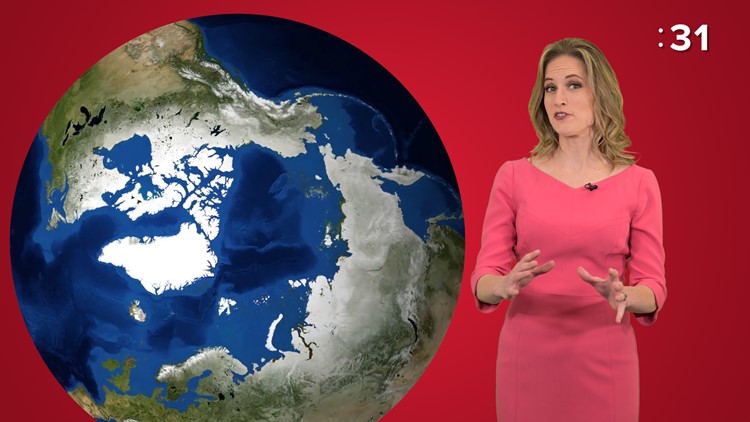Before you read further, make sure you're all caught up on “round 1” and “round 2” of Climate Minute!
One could argue that winter is the most polarizing of the four seasons in the Northeast. You either love it or you hate it.
What can’t be argued is that climate change is already having an effect on what is considered a “normal” winter in many places. Data going back to 1970 shows that the average winter temperature has risen significantly in the Upper Midwest, Great Lakes and Northeast. Buffalo’s average winter temperature has risen just over 3 degrees since 1970.
But a higher average doesn’t mean these locations are exempt from extreme cold events. Actually just the opposite. Temperatures are rising at the mid-latitudes, but they are rising 2 to 3 times faster in the Arctic Circle. That leads to weaker winds surrounding our old friend, the polar vortex. Learn more here:
It’s accurate to say that winters are warming on average, but based on the information above, it might be a little more descriptive to say that winters in the Eastern U.S. are getting more extreme with big temperature swings. Those ups and downs may lead to more “freeze-thaw” cycles in a cold season. That’s bad news for heavily-traveled roads.
Let’s go back to the Arctic Circle for a bit. This region is home to a huge chunk of Earth’s glacial ice cover, but that ice is shrinking as the Arctic Circle warms. Right now, glacial ice takes up 10% of the planet’s land area from pole to pole, but many small mountain glaciers at mid and lower-latitudes could melt away by the middle of this century. That’s a big threat for wildlife species that call glaciers home and the melt water could flood humans with problems too.
Climate change is affecting precipitation patterns as well as temperature trends year-round. Regions of the world that are normally hot and dry are getting hotter and drier. Other areas that are typically wetter are experiencing fewer days with precipitation but the days that do bring wet weather are more likely to bring torrential, flooding rain.
These shifts in regional climate patterns will require the world’s food growers and producers to think ahead and take steps to mitigate the impacts. If they don’t, more global food price shocks like the one in 2007 could force millions of the world’s poorest people into a hunger crisis.
People living in the Western U.S. have different reasons to worry about warming winters and shifting precipitation patterns. Late fall and early winter typically marks the “rainy season” for the region. In a typical pattern, streams of storms coming in from the Pacific naturally put a stop to the summertime wildfire season. But as the region’s desert climate becomes, on average, even hotter and drier, wildfires are happening more often, covering more ground in shorter amounts of time and causing a lot more damage.
Humans play a role two times over in this case: we’re contributing to a warming climate and expanding into more wildfire-prone areas as our population explodes out west.
What climate science questions do you have? Send them to Heather Waldman at heather.waldman@wgrz.com to keep the conversation going.
You can also chime in on Twitter and Facebook using #ClimateMinute. Be sure to watch the series in its entirety on the WGRZ YouTube channel.



